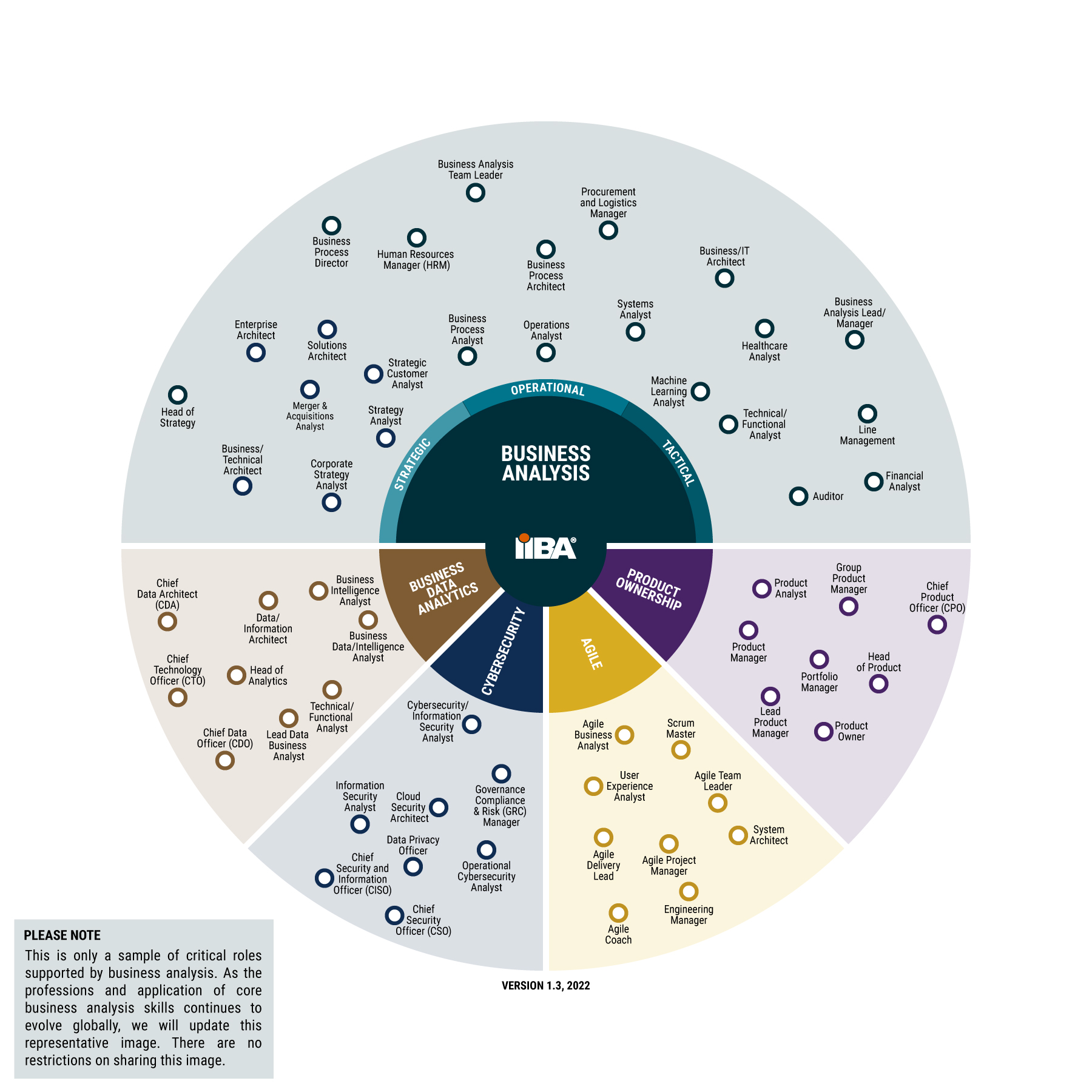Riding the Waves of Change: A Retrospective on 20 Years of Business Analysis
Receive free IIBA updates and exclusive content!

As International Institute of Business Analysis (IIBA) marks its 20th anniversary this year, much has changed since the organization’s inception.
In 2003, the field of business analysis was still in its infancy, with many of the tasks now performed by business analysts often distributed across other job functions, such as project management or systems analysis.
To give you a sense of how long ago that was, Skype had only just launched, Blockbuster Video hadn’t yet gone the way of the dinosaurs, and Britney Spears was still dominating the pop charts (yes, that long ago).
IIBA itself only had a modest 28 members from 21 different organizations, who founded the non-profit in Toronto, Canada, to serve a growing and promising field.
From the outset, IIBA aimed to promote the development and recognition of the business analysis profession by providing resources, certifications, and a community for practitioners—and that it has certainly done.
Six certifications, 30,000 members, 120 chapters, and 500 partnerships later, both IIBA and business analysis have only grown in influence across myriad industries and organizations of all sizes, fuelled by the development of web-based technologies, enterprise software systems, and the rise of Big Data.
Today, business analysis and its sub-disciplines are integral to how businesses adapt and function, supporting a number of different roles (see below).

In celebration of this milestone, let’s take a look at where the profession is today using IIBA’s 2022 Global State of Business Analysis Survey of more than 4,200 practising business analysis professionals from 165 countries.
A Global Profession
One need only glance at the regions where business analysis thrives to get a sense of how truly global the profession has become.Among the 4,245 respondents surveyed, 29% were from the Americas and the Caribbean, 28% from Asia and Oceania, 25% from Africa and the Middle East, and 18% from Europe.
The United States, India, Canada, South Africa, and Australia round out the list of the top business analysis hubs, with half of the respondents hailing from one of these five countries. Each differs slightly in terms of the most popular industries for business analysts, average salary by gender, and area of specialization—but shared patterns emerge from the data.
In India, for example, 39% of respondents worked in IT, and agile was the top specialization (held by 71% of respondents). By contrast, 40% of South African respondents worked in the banking/finance/insurance sector compared to just 17% in IT, but a staggering 80% specialized in agile.
The top industry for respondents from the US, Canada, and Australia was banking/finance/insurance, with government coming in second for the latter two—there was a two-way tie for American respondents between IT and the healthcare/pharmaceutical industry.
(Psst! Did you know that 92% of respondents recommend certification to support career development? Find out more.)
Agile was by far the most popular specialization, with at least 70% of respondents in each country preferring it to the other three: cybersecurity, business data analytics, and product ownership analysis (the latter was a consistent second place in all regions).
The most popular reasons for agile adoption among businesses are shorter time to market, enhanced collaboration, and increased customer satisfaction. And the data shows they’re willing to pay for it: respondents who held the Agile Analysis (IIBA®-AAC) Certification earned 28% more than non-certified respondents, the highest margin among all certificates offered by IIBA.
Salary by gender was also an interesting metric, as women out-earned men in every region bar Canada and Australia, though men’s salaries among all respondents were 6% higher. Women accounted for 46% of respondents, which is positive considering global statistics that show many women left the global workforce during the pandemic.
In terms of the highest salary by region, the US came out firmly on top, with female respondents averaging USD $104,966 and their male counterparts averaging USD $96,073. Australia was a close second, followed by Canada and South Africa.
Finally, at least 60% of respondents in all regions but India (39%) held at least one certification, which bodes well for the future of businesses around the world.
While the last few years have brought tremendous change and new challenges, today's business analysis professionals are more equipped than ever to help businesses adapt to the new normal, as this IIBA blog discussed. And it's backed up by the data.
A Day in the Life
So, what does a typical day look like for a business analysis professional in 2023?Glad you asked!
As a 25-to-35-year-old full-time employee with a university degree, you’d likely start your Monday gearing up for a 40-hour work week (with overtime a distinct possibility, per 32% of respondents).
After your morning commute, you’d probably spend some time looking for a parking spot, as your organization boasts between 100 and over 5,000 employees—although there’s a 25% chance you work for a company of less than 100 and most of your colleagues recognize your face.
As you approach your desk, your manager from the IT/Project Management department waves you over, eager to chat about the weekend’s hockey/baseball/soccer/cricket/football/rugby game. Although you’re a great communicator (even when it comes to sports), you’d rather be putting your exceptional business knowledge to use by brainstorming, creating user stories, interviewing, or process modelling—which thankfully occupy the bulk of your day.
After your discussion, you turn on your computer and Teams has you listed as a “Business Analyst” or “IT Business Analyst.” In a few years, you’ll probably be promoted to “Senior Business Analyst.” However, 27% of the time, your business analysis skills aren’t even reflected in your job title, which gets you thinking…
As the dreaded 3 p.m. crash hits, exactly 42% of your mind considers changing jobs, but you quickly remember that the energy and utilities sector (the very same one you work in) is more lucrative than manufacturing, transportation, or government, with an average salary of USD $91,073 for someone with your skills.
Plus, you recently got your Certified Business Analysis Professional (CBAP®) certification from IIBA, so you earn 25% more than Tim from Finance who didn’t (and whose parking spot you stole on the way in).
You quickly bat away the idea, but a role in Product Management, Product Ownership, Data Analytics, Project Management, Business Architecture, or Consultancy remains an attractive—and easily attainable—option.
Of course, there’s a 79% chance you never even came into the office today, either basking in your 6% salary bump as a remote worker or pondering your 4% pay cut as a hybrid one.
Not to worry. You’ll only have another four years or so, on average, with your current employer.
See you all in 2043!
Want to contribute to the changing face of business analysis? Take the 2023 Global State of Business Analysis survey today and share your unique perspective on the current business analysis environment.
Be heard! Complete the survey now.

About the Author:

Robert McClements is the Communications and Media Relations Specialist at IIBA®. With over six years of communications experience at non-governmental organizations, he contributes to IIBA’s marketing and communications efforts in support of the business analysis profession and community. Now residing in his hometown of Montreal, Robert enjoys spending time with his family, listening to music, and reading.



